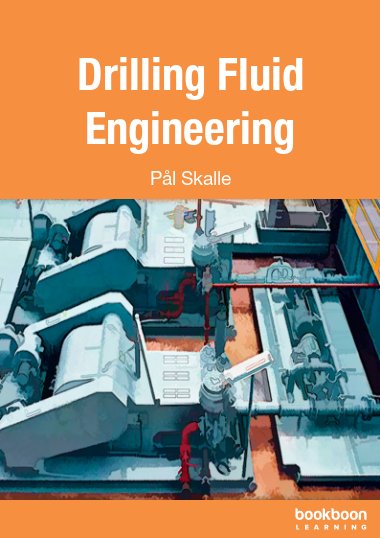This book presents how to apply fluid mechanics on drilling fluid related challenges and explains the related physics involved and the different engineering approaches. Mud has many functions, the single most important one is to remove the cuttings a) away from under the bit and b) transport them from the bottom to the surface. Viscosity of drilling fluids is not a constant parameter; it varies with shear rate. Pipe, rock bit and annular friction pressure loss has high importance for several tasks. Stable wellbore includes many sub tasks like chemical stability and filtration control.

الوصف
المحتوى
- Introduction
- Nine distinct mud systems
- The five main tasks of a drilling fluid
- About this book
- Mud circulation loop and its components
- The mud loop and solids control
- The mud pump
- Drilling fluid viscosity control
- Clay chemistry
- Polymer chemistry
- Rheology of drilling fluids
- Filtration control
- Additives
- Hydraulic friction in the circulating system
- Head loss
- Laminar flow
- Turbulent pipe flow
- Singularity losses
- Removal of cuttings from under the bit
- Cuttings removal process
- Boundary conditions of the drilling process
- Optimizing ROP, liner by liner
- Optimizing the complete well
- Transport of cuttings to the surface
- Hole cleaning in vertical wells
- Hole cleaning in medium inclined wells
- Hole cleaning in highly inclined wells
- Keeping wellbore within maximum and minimum pressure; ECD-control
- Density control
- ECD factors
- Temperature variation
- Mathematical model of pressure surge & swab
- Keeping the wellbore stable
- Introduction
- Mechanical stability
- Chemical stability
- Inhibitive muds
- Hole problems
- Countermeasures to hole-problems
- References
- Supportive information
- Nomenclature
- Abbreviations and explanations
- Definitions
- Continuity, momentum and energy equation in microscopic and macroscopic form
- Hydraulic friction loss equations
- Determine Rheological Constants – Regression Analysis
- Unit conversion factors
- Viscosity and density of water vs temperature